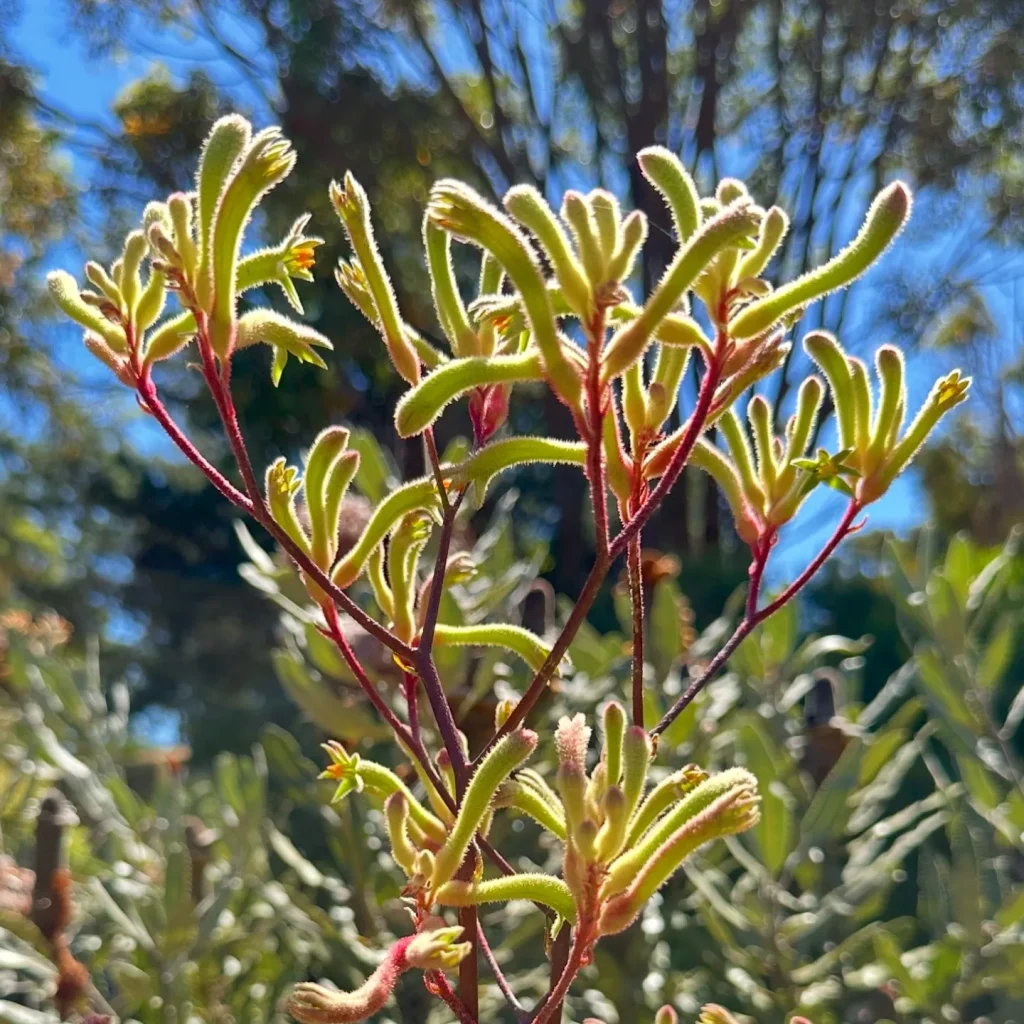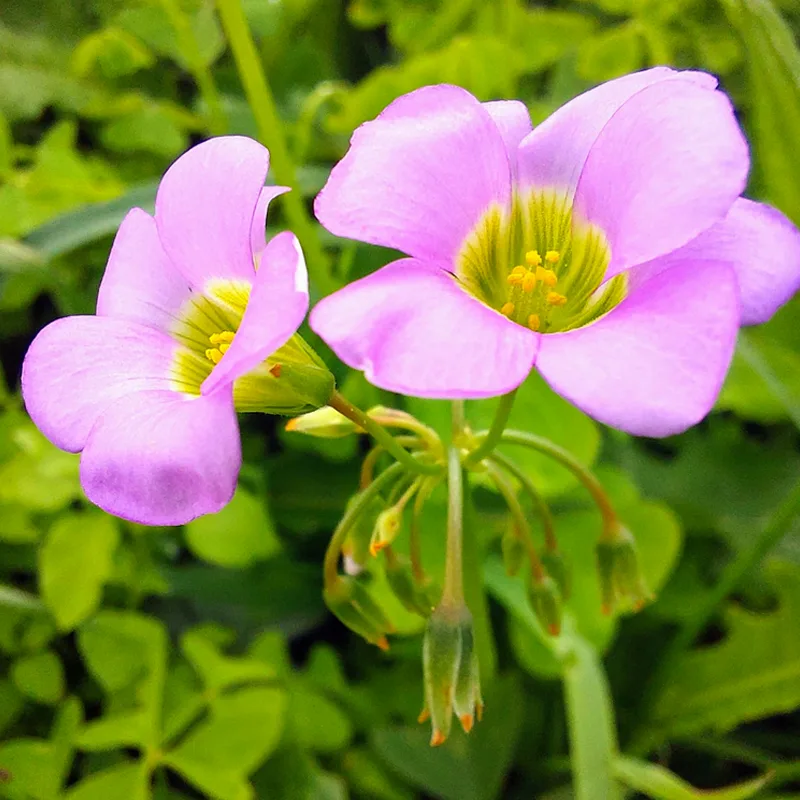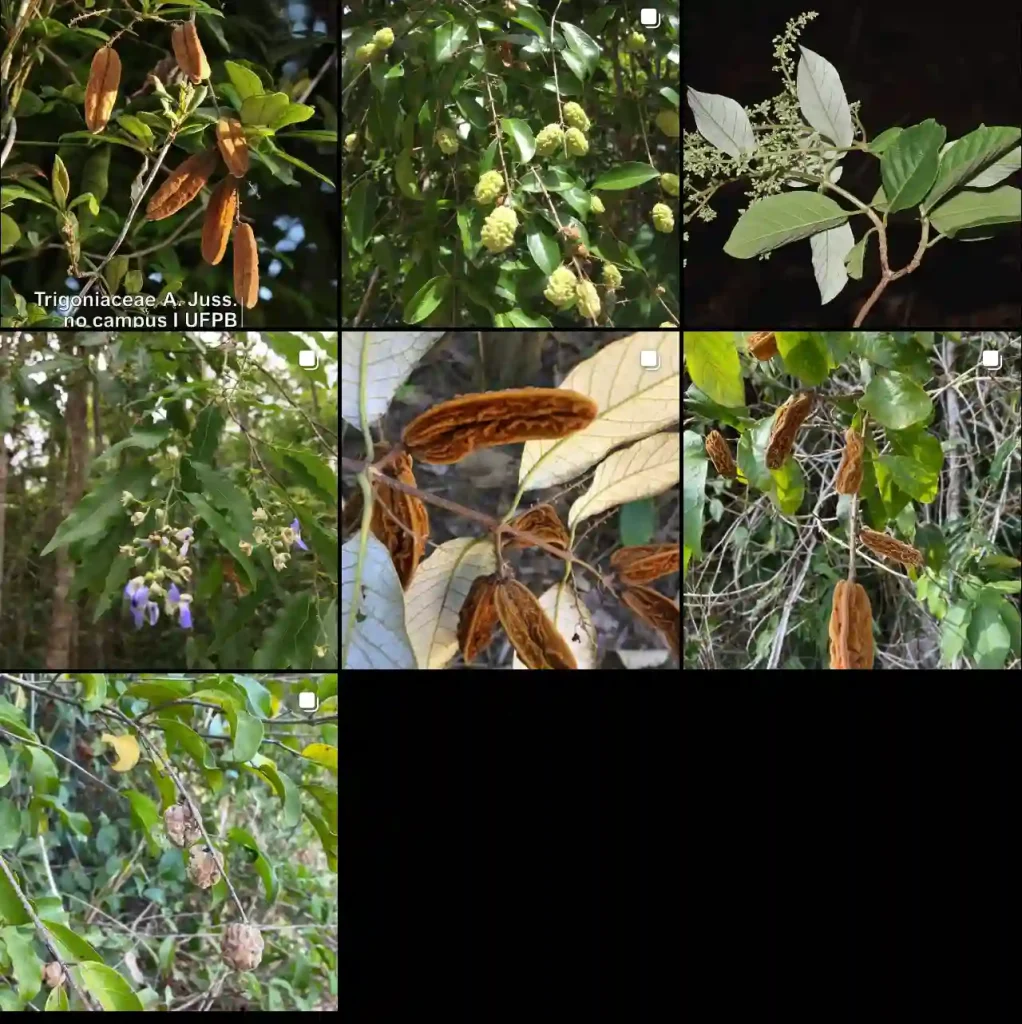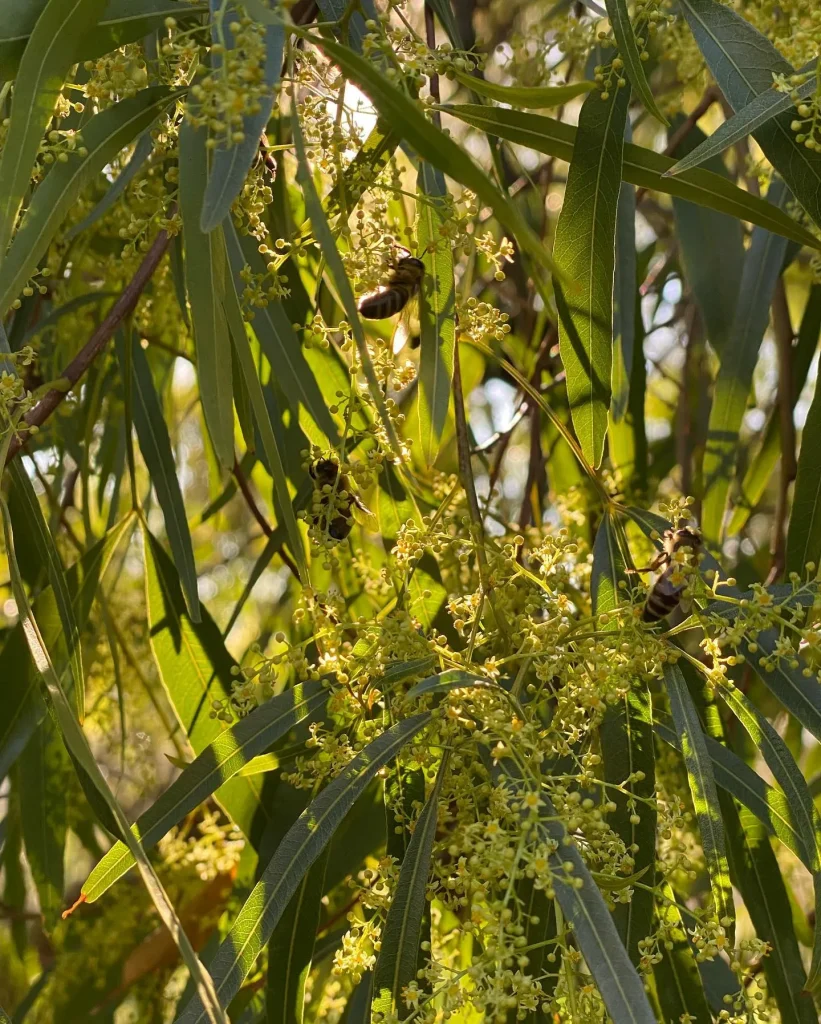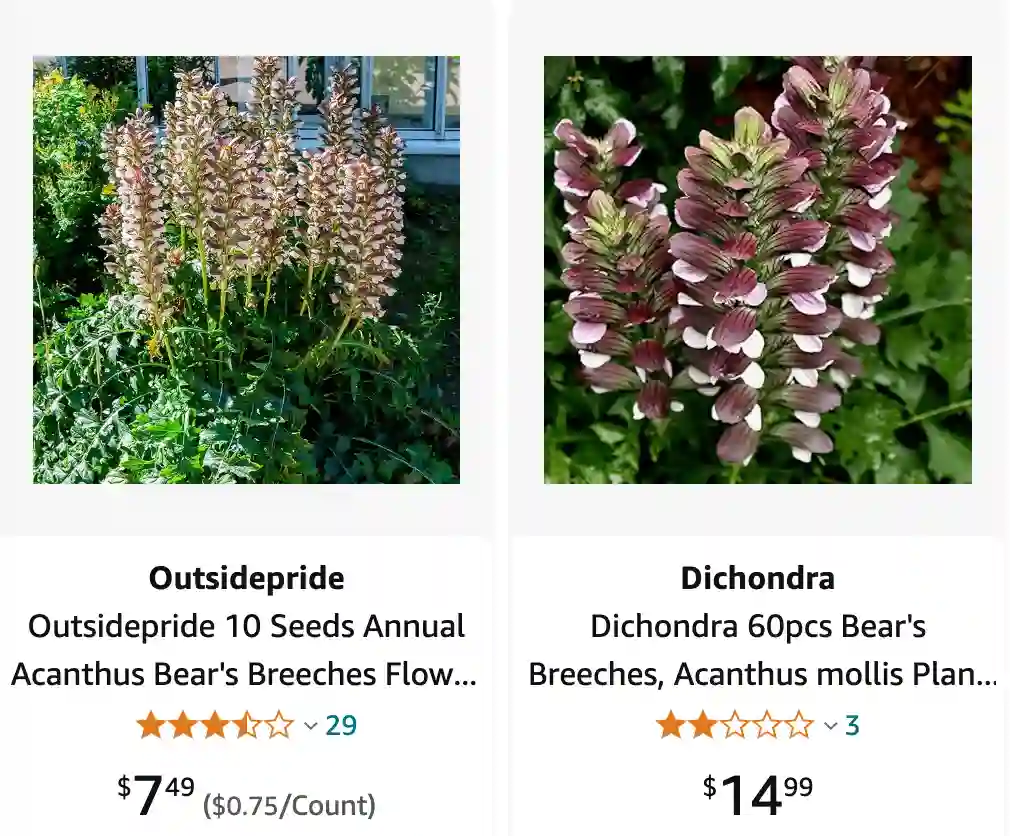
What do bear’s breeches seeds look like?
Bear’s breeches seeds are small and dark, almost like tiny pebbles with a smooth texture. When I first saw them, I was surprised by how tiny they were, considering the impressive plants they grow into.
29 Species in Genus Acanthus
Are bear’s breeches poisonous? Is bear’s breeches poisonous to dogs?
As for whether bear’s breeches are poisonous, I’ve heard conflicting opinions. Some say that all parts of the plant are toxic if ingested, while others claim that the toxicity is minimal. Personally, I err on the side of caution and keep them away from pets and children.
Can you grow bear’s breeches in pots?
Yes, you can definitely grow bear’s breeches in pots. In fact, that’s how I started growing them myself. I find that they adapt well to container gardening, as long as the pot is large enough to accommodate their sizable roots.
How to care for bear’s breeches?
When it comes to caring for bear’s breeches, they’re quite low-maintenance once established. They appreciate well-draining soil and occasional watering, but they’re quite resilient and can tolerate some neglect.
How to get rid of bear’s breeches?
Getting rid of bear’s breeches can be a bit of a challenge. I’ve found that regular pruning and pulling out any unwanted shoots usually does the trick. However, they can be persistent, so it’s important to stay on top of maintenance.
Where to plant bear’s breeches?
When planting bear’s breeches, they prefer a sunny or partially shaded spot with well-draining soil. I’ve found that they thrive in slightly acidic to neutral soil pH.
Why is acanthus called bear’s breeches?
As for why Acanthus Mollis is called bear’s breeches, I’ve heard a few theories. Some say it’s because the shape of the leaves resembles the furry breeches worn by medieval warriors, while others claim it’s because the flowers resemble a bear’s paw. Regardless of the origin, I think it’s a fitting name for such a striking plant.
How to propagate bear’s breeches?
Propagating bear’s breeches is relatively easy. I’ve had success dividing established clumps in the spring or taking stem cuttings in the summer. They root easily in moist potting soil or water, and before you know it, you’ll have new plants ready to go.
When to cut back bear’s breeches?
When it comes to cutting back bear’s breeches, I usually wait until late fall or early winter after the foliage has died back. I trim away any dead or damaged leaves, being careful not to cut into the crown of the plant. It’s a simple task that helps keep them looking tidy and healthy.
How to harvest bear’s breeches seeds?
Harvesting bear’s breeches seeds is quite straightforward. I wait until the seed pods have turned brown and dry on the plant, then I carefully snip them off and collect the seeds. I store them in a cool, dry place until I’m ready to sow them in the spring.
How to prune bear’s breeches?
Pruning bear’s breeches is similar to cutting them back. I trim away any dead or damaged foliage, as well as any spent flower stalks, to encourage new growth and keep the plant looking neat. It’s a quick task that I usually tackle in late fall or early winter.
Is bear’s breeches invasive?
As for whether bear’s breeches are invasive, I haven’t personally experienced any issues with them spreading aggressively. However, I’ve heard that in some regions they can self-seed and form dense colonies if not kept in check. In my garden, I keep an eye on them and remove any unwanted seedlings to prevent them from becoming invasive.
When do bear’s breeches bloom?
Bear’s breeches typically bloom in late spring to early summer, producing tall spikes of showy flowers that attract bees and butterflies. The flowers are quite striking, with hooded purple or white bracts surrounding small white or pink flowers.
Where to buy bear’s breeches?
If you’re looking to buy bear’s breeches, you can usually find them at nurseries or garden centers that specialize in perennial plants. Alternatively, you can also purchase seeds or starter plants online from reputable suppliers.
If i die, water my plants!
